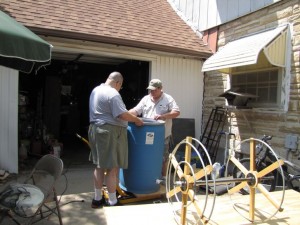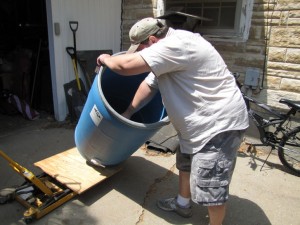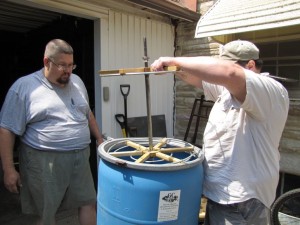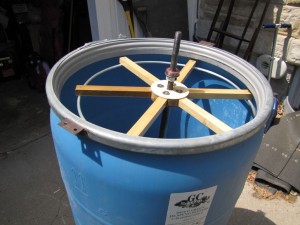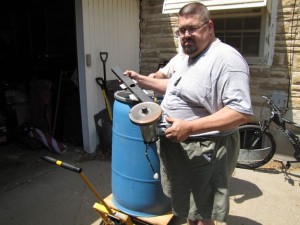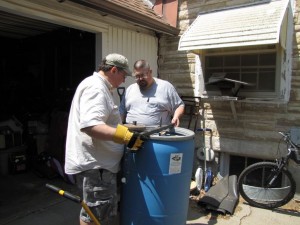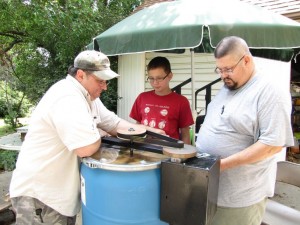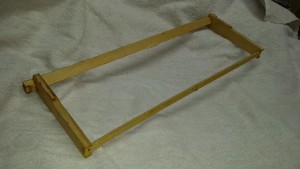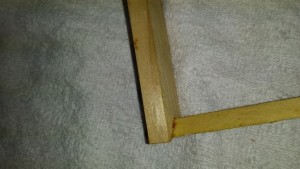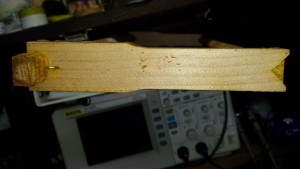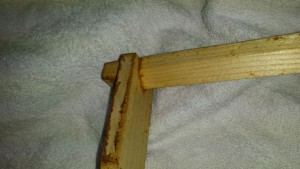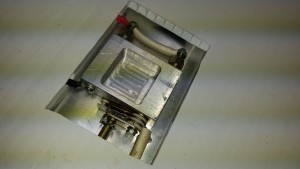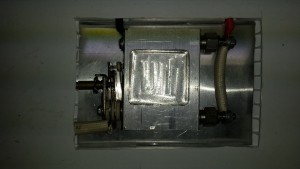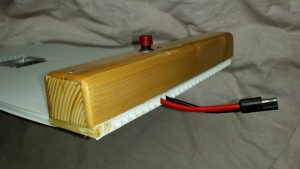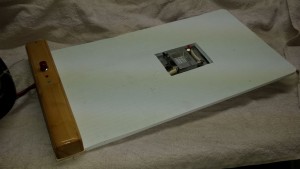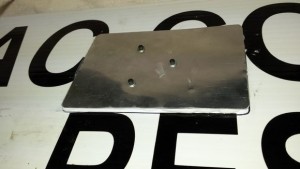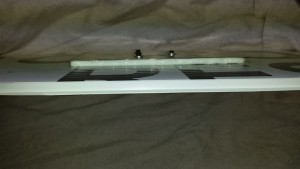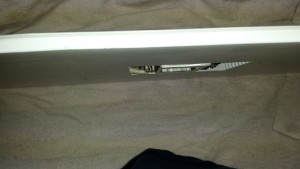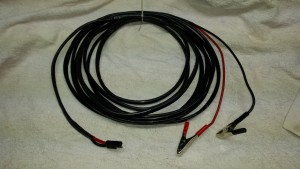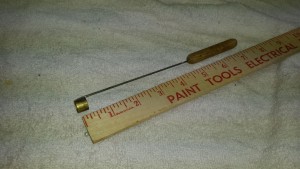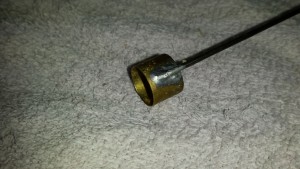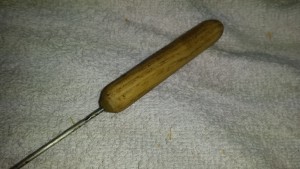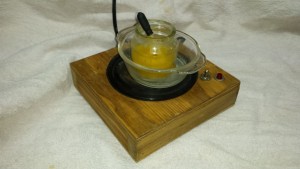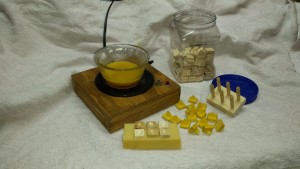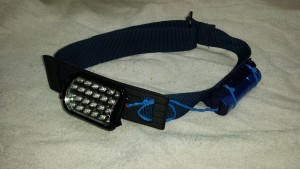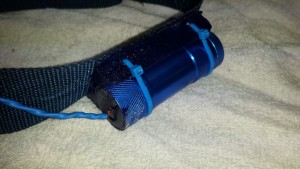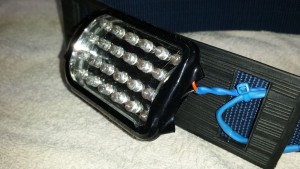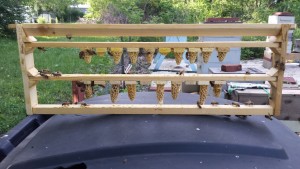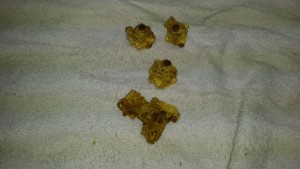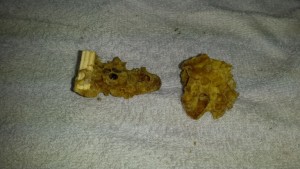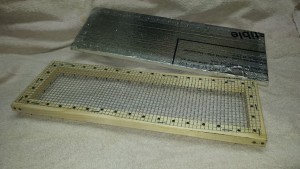I put together an extractor inspired by ideas I had seen on the Beesource forums. The speed control for the treadmill makes the speed adjustment anywhere from "barely turning" to "frightening." I made the reel by first constructing a couple of 6-spoked wheels from poplar. The rings are 5/16" Steel brake line, soldered together with a copper insert (lead free solder, if you please.) The shaft is made of a piece of 1/2" water pipe, which just so happens to let a 5/8" bolt fit inside of it tightly (I'm not interested in explaining why, it just does, at least with the stock in my part of the world. Suffice it to say it is somewhat like why a 2X4 isn't 2 inches by four inches in size, it's 1-3/4" by 3-1/2") The one I had let me "thread" a 5/8" bolt into it for bearing shafts for the bottom, and for the top I drove a 5/8" bolt with the head cut off into the end of the pipe, drilled a cross hole for a roll pin to secure it and provide the threads for the pulley. A couple of flange fittings provide positive attachment to the wheels (by the way, I did have to re-thread the bottom flange so that the taper of the NPC pipe thread was the proper orientation, but I had the tap laying around and it made the flange fit perfectly.) Of course, all of this is covered by several coats of "camcoate" food grade epoxy.
We're using a food grade barrel here (that originally held pickled jalapenos, gave it a 3 week soak in soda water to get rid of the jalapeno smell!) Next I made a mount for a crossbar by welding two tabs on the barrel's ring, and cut most of the plastic lid center out. I then made a bottom cross bar with a sealed bearing in the center, about 2/3rds the way down in the barrel to fit the reel size.
Set the reel inside the bottom bearing....
Place the top bearing in place on the shaft, and install the top crossbar with treadmill motor.
The top pulley was a problem, until I hit upon the following solution. I knew I could source a belt with the same grooves for about any length I needed (and I had mounted the motor with the same tension adjustable bracket that was on the treadmill. The treadmill belt was only about 6" or so in diameter. So I turned it inside-out so the grooves were on the outside (I knew this would be the correct groove pitch for sure!,) cut a disc of 3/4" plywood that would fit tightly inside the belt (actually stretched over the plywood disc somewhat.) I then added a top and bottom shoulder with 2 more discs of 1/4" plywood that had a slightly larger diameter. I welded a 5/8" nut to a large diameter 5/8" washer, and bolted it to the pulley by drilling and tapping for 6-32 screws to mount through the washer to the pulley. I cut all the discs using a jig on my band saw with a 1/4" center hole. This leaves a perfectly centered alignment hole to drill for the 5/8" shaft, so that you can bolt it all together on a 5/8" threaded bolt to align everything perfectly.
Put the top pulley in place by threading it on the shaft and securing it with a jam nut. Install the control box by bolting it to the crossbar, and plugging in the motor wiring. All the controls were hacked from the treadmill. It will not start unless it is plugged in with the speed control to "off." If it is even the slightest bit turned on, plugging it in will not allow the motor to start. This is a nice feature, and it's a standard one with the treadmill controller, along with the "soft" start feature that avoids the jerking the reel slower and faster.
Anyway, it works quite well, and I look forward to using for many seasons to come!

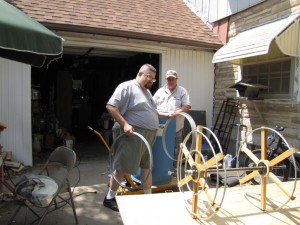
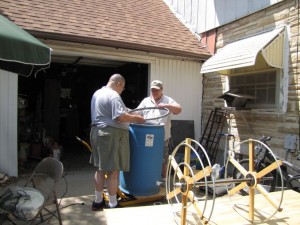 |
|